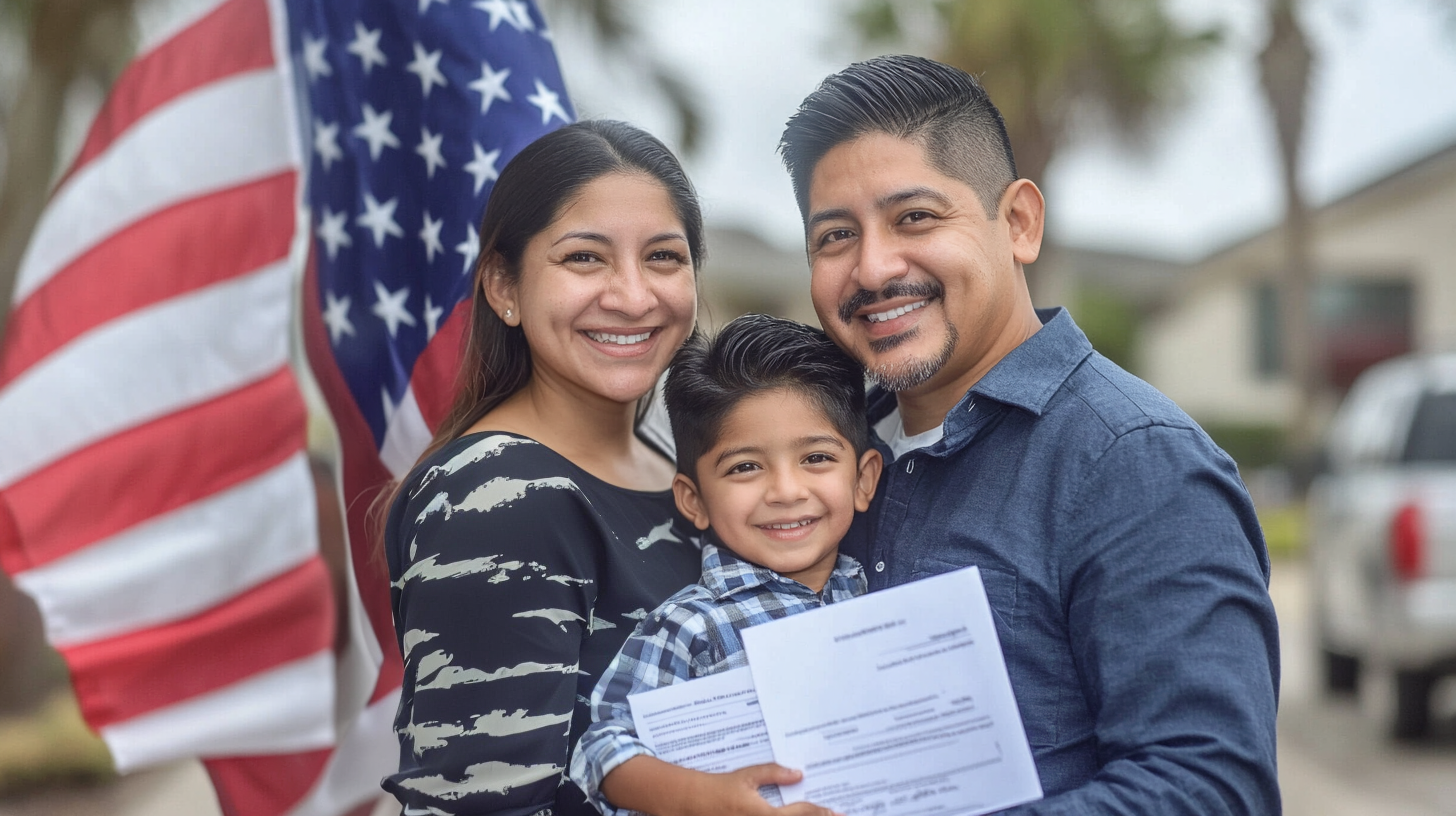When it comes to U.S. immigration laws, few things are as complex and critical as understanding the eligibility requirements for asylum. In May 2023, the U.S. Department of Homeland Security (DHS) enacted the Circumvention of Lawful Pathways Final Rule in response to rising border crossings. This rule is intended to curb unauthorized entries at the southern border by encouraging asylum seekers to use designated legal pathways. However, for those hoping to find refuge in the U.S., this rule has created new challenges and raised many questions.
As an immigration attorney, I’ve guided countless clients through the asylum process, and I understand how confusing new rules like this can feel. Below, I’ll break down what the Circumvention of Lawful Pathways Final Rule means, how it might affect your case, and why having experienced legal support could be critical to your success.
What is the Circumvention of Lawful Pathways rule?
The Circumvention of Lawful Pathways rule essentially limits asylum eligibility for individuals who attempt to enter the U.S. without documentation at the southern border. This rule encourages migrants to apply for asylum in third countries they pass through or to use legal tools like the CBP One app to schedule an appointment at a U.S. port of entry.
In my experience, understanding what DHS wants can make a huge difference in a case. This rule underscores that preference, as it expects migrants to use "lawful pathways" rather than risking unauthorized crossings. For those who bypass these paths, it can be a tough battle to apply for asylum, although certain exceptions do exist.
Why was this rule introduced?
This rule was introduced to manage the high volume of entries at the U.S. southern border and promote organized immigration methods. The DHS and U.S. Citizenship and Immigration Services (USCIS) aim to direct people to safer, structured ways of seeking asylum, rather than the often dangerous, undocumented crossings that have become common.
In my years of practice, I’ve seen firsthand how dangerous these border crossings can be for migrants. This rule is meant to protect migrants from these risks by incentivizing legal entry options, reducing reliance on human smugglers, and alleviating stress on immigration courts.

What are the lawful pathways for seeking Asylum?
Under this new rule, asylum seekers are encouraged to pursue one of the following lawful pathways before arriving at the U.S. border. Here’s how each pathway works:
- Applying for Asylum in a Third Country
For those passing through countries with an operational asylum system, DHS expects them to apply there first. For example, if you pass through Mexico en route to the U.S., the rule expects you to seek asylum there before continuing north. - Scheduling an Appointment via the CBP One App
The CBP One app allows migrants to schedule appointments at a port of entry, providing a lawful and safer way to enter the U.S. This tool has proven effective for many of my clients who could otherwise face lengthy and uncertain wait times. - Humanitarian Parole Programs
The U.S. has implemented specific humanitarian parole programs for certain nationalities, including Cubans, Haitians, Nicaraguans, and Venezuelans. These programs provide a temporary legal pathway into the U.S. without the risks associated with unlawful border crossings.
For those unfamiliar with these pathways, it’s crucial to consult an experienced immigration attorney. I’ve guided numerous clients through these options, ensuring they understand each one’s unique requirements.
Are you still eligible for Asylum under the new rule?
The new rule creates a presumption of ineligibility for asylum if you enter the U.S. unlawfully. However, if you follow one of the legal pathways mentioned, such as seeking asylum in a third country, you’ll generally still be eligible to apply.
But for those who cross the border without using these legal avenues, the process becomes much harder. This is where my role as an immigration attorney becomes critical, I help clients understand their options and find the best pathway forward.

Exceptions to the rule
Even if you entered the U.S. unlawfully, you might still qualify for asylum if you meet one of the specific exceptions in this rule. The exceptions I commonly work with include:
- Imminent Danger: If you were in immediate danger and unable to use a lawful pathway, you may still be eligible.
- Unsafe Transit Countries: If you passed through countries without functioning asylum systems or where you were at risk, this could qualify as an exception.
- Vulnerability to Trafficking or Exploitation: Certain vulnerable individuals, including victims of human trafficking, may also qualify for exceptions under this rule.
Gathering evidence to prove eligibility for these exceptions can be challenging, but it’s essential. In my experience, clients who present detailed, well-supported evidence have a significantly higher chance of success. As your attorney, I’ll work with you to compile and organize this information to build the strongest case possible.
What Happens if you receive a Notice to Appear (NTA) under the circumvention of lawful pathways rule?
If you attempt to enter the U.S. unlawfully without following one of the lawful pathways outlined in the Circumvention of Lawful Pathways rule, you may be deemed ineligible for asylum. In many cases, this will lead to the issuance of a Notice to Appear (NTA), which initiates deportation proceedings against you. The NTA specifies the charges for deportation and includes important details about your upcoming immigration court hearing.
If you’ve received an NTA, it’s essential to understand what this means and how to respond. I’ve written a detailed guide on what to do if you receive an NTA, covering the necessary steps to protect your rights and improve your chances in immigration court. Reviewing this information can help you prepare for the Master Calendar Hearing (your first court appearance) where you’ll address any discrepancies in the NTA and discuss potential defenses.

Why working with an experienced immigration lawyer is essential
The Circumvention of Lawful Pathways rule has added layers of complexity to an already challenging process. Small errors or misunderstandings can have significant consequences, which is why working with an experienced immigration lawyer is crucial.
At Tingen Law, we specialize in:
- Guiding Clients Through Legal Pathways: We’ll help you navigate the CBP One app, understand humanitarian parole, and explore other lawful pathways that apply to your case.
- Identifying Exception Eligibility: If you entered the U.S. unlawfully, we’ll work with you to determine if you qualify for any exceptions and help you compile supporting evidence.
- Comprehensive Legal Representation: From responding to NTAs to preparing for hearings, we’ll ensure you’re equipped with the legal support and strategy needed to navigate this complex process.
In my experience, clients who seek professional guidance are far more likely to secure favorable outcomes. With Tingen Law, you don’t have to face these challenges alone.

Final Thoughts
The Circumvention of Lawful Pathways Final Rule has transformed the landscape of asylum eligibility in the U.S., making it essential to use legal entry methods to protect your chances of success. As someone who’s dedicated to helping individuals navigate this system, I understand the obstacles and am committed to supporting my clients every step of the way.
If you’re considering applying for asylum or if you’ve received an NTA, I encourage you to contact Tingen Law for a consultation. We’ll review your situation, explain your options, and work with you to find the best approach for your case.
Protect your rights and your future by seeking expert guidance. Contact Tingen Law today to learn how we can help you navigate your immigration journey.

